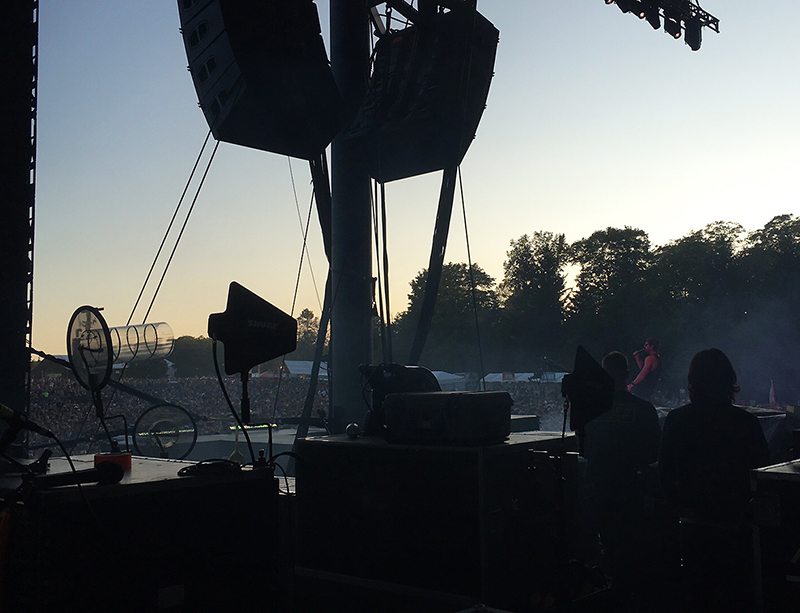
Both Are Invisible, But…
At this point, you may want to move the frequency control up or down a bit and listen to the results, and, you may also want to experiment with the +/- knob to see if, perhaps, less cut is needed overall. Maybe the moves you’ve been making with the 630 and 800 Hz sliders on a graphic for years have really been calling for a half-octave -4.5 dB dip at 708 Hz all along.
How does this apply to the world of wireless mic, IEM, and comm systems, as well as RF in general? Many folks I’ve encountered in both RF workshops and on the road are nervous around – even afraid of – using wireless equipment. They don’t trust it, expect it to fail at the worst possible moment, and generally have a real problem working with this invisible… voodoo. Why? Because RF is invisible – we can’t see what’s happening with this invisible link between the transmitters and the receivers.
Many of these same folks will happily hang, point and tune PA systems all day long without ever having seen a sound wave! (Yep, sound waves are just as invisible as radio waves.) And yet “knowing” about sound waves, and how they behave, is what makes it possible to visualize what we’re doing when timing and tuning a system.
Consider an arena with a solid glass wall of VIP booths positioned all the way down one side of the room, and any system tech is going to know that there are going to be reflection problems to deal with. Even junior PA techs know that if a sound wave at a certain frequency reflects off a surface and then intersects the direct signal again, there will be cancellation at the frequency in question. Ditto if a timing issue is causing cancellations.
Well, waves are waves, and yet time after time when I try to describe the purpose of a diversity antenna system and the effects of multipath reflections on radio waves, I get blank looks, even from some very experienced people.
Practical Applications
To tie all of this together, if you struggle with understanding RF issues, start with “go with what you know” – beginning with what you know about how sound waves behave. Do sound waves and radio waves behave exactly the same way all of the time?
Well, yes and no. For example, where a sound wave might be expected to reflect off a surface, say the back wall of a room, a radio wave might pass through that wall – but – it might then reflect off of the wall behind that wall (say, the steel cladding on the outside of an arena) and then back through the first wall, and finally back into the wireless system antennas.
What does this look like in practical terms? Let’s go back to the arena with the glass wall: we know that the loudspeaker system has a pre-defined coverage pattern, and that if that pattern is not steered away from the glass wall, there will be more damaging reflections. So, what if musicians’ in-ear monitors perform really badly on the stage in that room? Another “mysterious” RF issue? Gremlins? Interference? Well, maybe not.
Industry-standard IEM transmitter antennas also have a pre-determined, known coverage pattern. And, if they happen to be at the glass wall that the system techs are trying to avoid, there will probably be destructive reflections that cause dropouts in the IEM systems. What’s the solution? GWWYK! Aim the antenna differently and/or switch to an antenna with less forward gain and a wider coverage pattern and/or turn down the Tx power on the transmitters; in other words, do what you can to limit the reflections, just as with loudspeakers.
Similarly, we know not to aim a loudspeaker through a piece of truss with a bunch of lights on it because all that hardware will interfere with the propagation of the sound waves. Yet sadly, I see wireless antennas pointed through truss on a regular basis, and yes, all that hardware does interfere with the propagation of radio waves.
The bottom line is that when faced with unknowns, go with what you know! Start with your existing knowledge base to begin to understand new ideas. Just be sure to keep an open mind about what you know and be prepared to modify your long-held beliefs when faced with evidence that they may have been a bit off to begin with.
